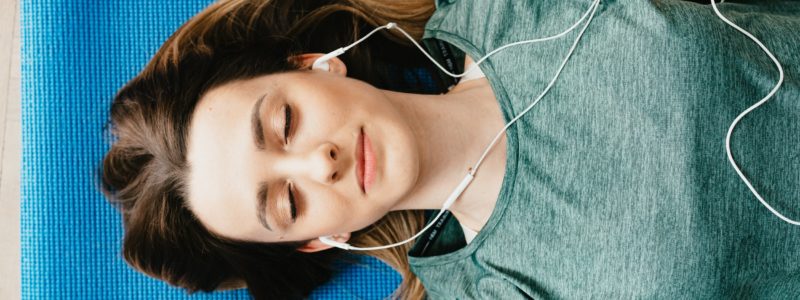Should We Be Mindful of Mindfulness?

One woman’s experiences with mindfulness practices and workshops. Did they work?
It was a few years ago that I started hearing the word ‘mindfulness’ a lot, but never really took much notice of it.
In a world where mental wellbeing is (thankfully) being discussed at a greater rate than ever, tips and techniques for looking after people’s mental health are being used by anyone and everyone, it seemed.
Nevertheless, I questioned whether mindfulness was something that lives up to the publicity it receives. This article is based on my own experience with mindfulness, and therefore my opinions are completely subjective, but it will hopefully give anyone who has not used it before some insight into what it is like to use, and the benefits it can have.
I hope to provide new information to those for whom mindfulness is unfamiliar, as it was for me.
Part 1: Discovering mindfulness
Mindfulness can be explained as being a process where a person pays more attention to the present moment, to their own thoughts and feelings, and to the world around them. The outcome of this is that people can improve their mental wellbeing by allowing them to understand themselves better and enjoy their lives more. It can allow a person to focus on what they are thinking, how they can deal with anything they need to, and also to calm their thinking down.
My own relationship with mindfulness has been an example of the familiar saying of “don’t knock it until you’ve tried it”. Having studied psychology and written (briefly, I may add) about mindfulness in the past, it has been something that has been on my radar for a few years, but I never used to think it would be something that would benefit me, or even something that I could carry out.
I didn’t think it would have any benefit on me because I tried hypnotherapy once and that didn’t work. Personally, I thought they were linked, but now I see that they are not, at least not in the way I thought. From my experience, hypnotherapy attempts to change a person’s thinking about a variety of issues, such as phobias, and that thinking continues to be affected – i.e. the person’s phobia is then cured.
Mindfulness, on the other hand, is a process that can be used anytime, anywhere, by a person, when it is required.
Part 2: Attending a mindfulness workshop
From my own experience, I have been in two workshops where we had to (or were at least encouraged to) carry out a mindfulness exercise. These workshops were based around stress in the workplace and were aimed at people who likely had not heard of mindfulness before.
For me, the first time I carried it out, it didn’t make me believe it could benefit me. The exercise was carried out in a room with a couple of hundred people in it, and I think this affected how much I was focusing on myself – I was more focused on what other people were doing and how different this was.
The second time, I was in a room with about twenty people in it, and this is where I started to feel it could be beneficial. We were told to close our eyes, clear our minds, and were then told various things within a, as I found out later, quite an advanced mindfulness exercise. It wasn’t just a case of closing my eyes and then opening them again, afterwards I felt that my mind was clearer and that I was more relaxed.
We were also asked to go for a walk, outside, for ten minutes, and to take in everything we saw. I found this quite difficult because I am someone who walks a lot, but with headphones in, and I am therefore quite oblivious to what is going on around me in those walks. To take in what the trees looked like, and to really look at the architecture of the building I walked past, was strange for me, but I liked it. I wasn’t distracted by a music track, I was just focused on what was in front of me, and processing only what I saw and felt.
After these exercises were finished, I was told that if we wanted to try mindfulness, there is an app we could download which we could use going forward. And that is what I did.
Part 3: Using mindfulness to help in daily life
After downloading the app, I took part in ten sessions, which were around five minutes each, with one session being completed per day. They were beginner’s sessions and so were quite easy to get into. I can only assume the more difficult sessions are longer in length and have perhaps more detailed techniques. However, from the ten sessions I took part in, I learnt to clear my mind of everything I was thinking about, to block out any outside noise that was present, and to focus on just my breathing. In turn, this made me feel calmer and more relaxed.
I chose to do these exercises just before I went to bed, but I could easily have done them at any time of the day. I think it depends on a person’s daily routine to when these exercises can be undertaken, but I think that making a person feel calmer is fine just about any time of the day!
In my experience, the techniques mindfulness develops within a person can be used in other situations and surroundings, not just when listening to an app. Let me give an example:
Not so long ago after I started to use the app, I was annoyed about a conversation I had with someone. Like many people I just wanted to move on from it and let it go. However, that feeling of annoyance was affecting what I was doing next, so I went and found a quiet place for a couple of minutes and cleared my mind of everything and focused on my breathing and clearing my mind. I was surprised that it worked, and I was able to carry on with what I was doing next with a clearer and calmer outlook.
It is important to note that mindfulness did not eradicate the problem. I don’t think we should see mindfulness as a solution on its own, but it can help us deal with problems by focusing our minds and allowing us to become calmer. Then, with the benefit of a calmer outlook, we are enabled them to focus on the next thing they do.
Part 4: Sharing mindfulness with the world
For anyone who is unsure about whether they should give mindfulness a go, or if it would be of any benefit to them, I would ask them these questions:
- Do you ever feel like you can’t shake off a negative emotion?
- Do you need a technique to allow you to feel more focused and calmer?
- Do you have a spare few of minutes in a day?
These are just questions that I have made, but if they bring with them the answer of “yes”, I would definitely recommend giving mindfulness a try. I think that even if a person doesn’t think they need a technique to help them, by trying mindfulness for just a few minutes may allow them to see the benefits it has, and create a technique that can be used when it may be viewed as being needed. After all, I think having a clearer and more focused mind can always be something for the better at any time in a person’s life.
I am the last person who thought mindfulness could work, but I am so happy that I have found something that I can use even when I might not be in a tranquil and peaceful environment. The techniques I have learnt just from a beginner’s set of exercises are ones that I can now use in everyday life, but if I carry on with such exercises and take part in more in-depth ones, I am interested in seeing how much further such techniques can go. Personally, I think people should be mindful about mindfulness, and at least learn how it can help, both at times when it is needed to help with something that is happening in the present, as well as calming the mind at any time, to deal with the stresses and strains of everyday life.
Sarah Keeping MBPsS MSc PgDip GDip BA (Hons)
Follow Sarah on twitter at @keepingapproach



